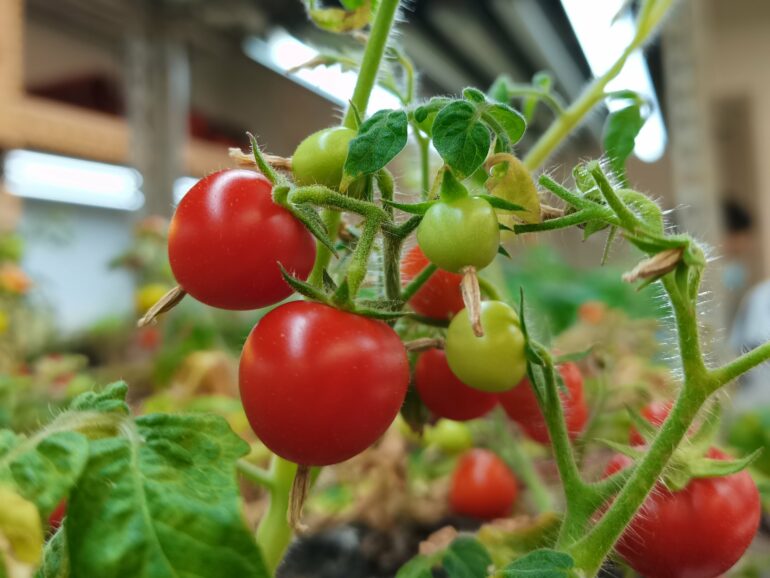A research team led by Prof. Qin Guozheng from the Institute of Botany of the Chinese Academy of Sciences has unveiled a previously unrecognized mechanism by which the RNA N6–methyladenosine (m6A) demethylase SlALKBH2 undergoes reduction-oxidation (redox) modification. This alteration affects its stability and its physiological role in regulating the normal ripening of tomato fruits.
In this study, published in Nature Plants, the researchers deepened their understanding of the role of hydrogen peroxide (H2O2), a mild oxidant that functions as a pivotal signaling molecule in controlling multiple biological processes.
They found that H2O2-mediated oxidative modification regulates the function of SlALKBH2, which is essential for the proper ripening of fleshy fruits. This ripening stage represents the final phase of fruit development, directly influencing fruit quality and shelf life.
Specifically, the researchers showed how H2O2 signaling interacts with RNA methylation modification to regulate plant development in a coordinated way.
The most prevalent chemical modification in eukaryotic mRNAs is m6A methylation. It regulates various biological processes, including mRNA stability and translation efficiency, by modulating mRNA metabolism.
As members of the dioxygenase family, m6A demethylases, including SlALKBH2, are capable of oxidatively reversing m6A methylation. This capacity raises the question of whether SlALKBH2 itself is subject to oxidative modification, similar to other redox-sensitive proteins.
To test this hypothesis, the researchers transiently expressed the SlALKBH2 gene in Nicotiana benthamiana leaves treated with or without H2O2, then subsequently monitored the redox status of SlALKBH2.
The results indicated a marked sensitivity of SlALKBH2 to H2O2-induced oxidation, resulting in the formation of homodimers both in N. benthamiana leaves and in tomato fruits. Notably, exposure to H2O2 was shown to accelerate tomato fruit ripening, implicating SlALKBH2 oxidation in this process.
The formation of SlALKBH2 homodimers was attributed to the involvement of multiple cysteine (Cys) residues, with Cys39 identified as a crucial site; mutation at this location drastically reduced homodimer formation. While oxidative modification improved the stability of the SlALKBH2 protein, it did not affect its m6A demethylase activity.
Moreover, the researchers identified NADPH-thioredoxin reductase C (SlNTRC) as the interacting protein of SlALKBH2. They demonstrated that SlNTRC regulates the redox state of SlALKBH2, thus affecting its m6A demethylation function in tomatoes.
Stable SlNTRC knockout mutants were then generated in tomatoes using CRISPR–Cas9-mediated gene editing. The homozygous mutant line experienced substantial delays in vegetative growth and an inability to bear fruit.
This study established a connection between H2O2 signaling and m6A methylation, highlighting the significance of redox regulation of m6A modifiers in the control of fruit ripening.
Given the crucial role of RNA m6A methylation in various biological processes, researchers speculate that this regulatory mechanism may also play a role in other developmental processes.
In summary, this study not only enhances our understanding of the molecular mechanisms underlying fruit ripening, but also offers new insights and strategies for improving crop varieties.
More information:
Redox modification of m6A demethylase SlALKBH2 in tomato regulates fruit ripening, Nature Plants (2025). DOI: 10.1038/s41477-024-01893-8
Provided by
Chinese Academy of Sciences
Citation:
Hydrogen peroxide and the mystery of fruit ripening: ‘Signal messengers’ in plants (2025, January 10)



